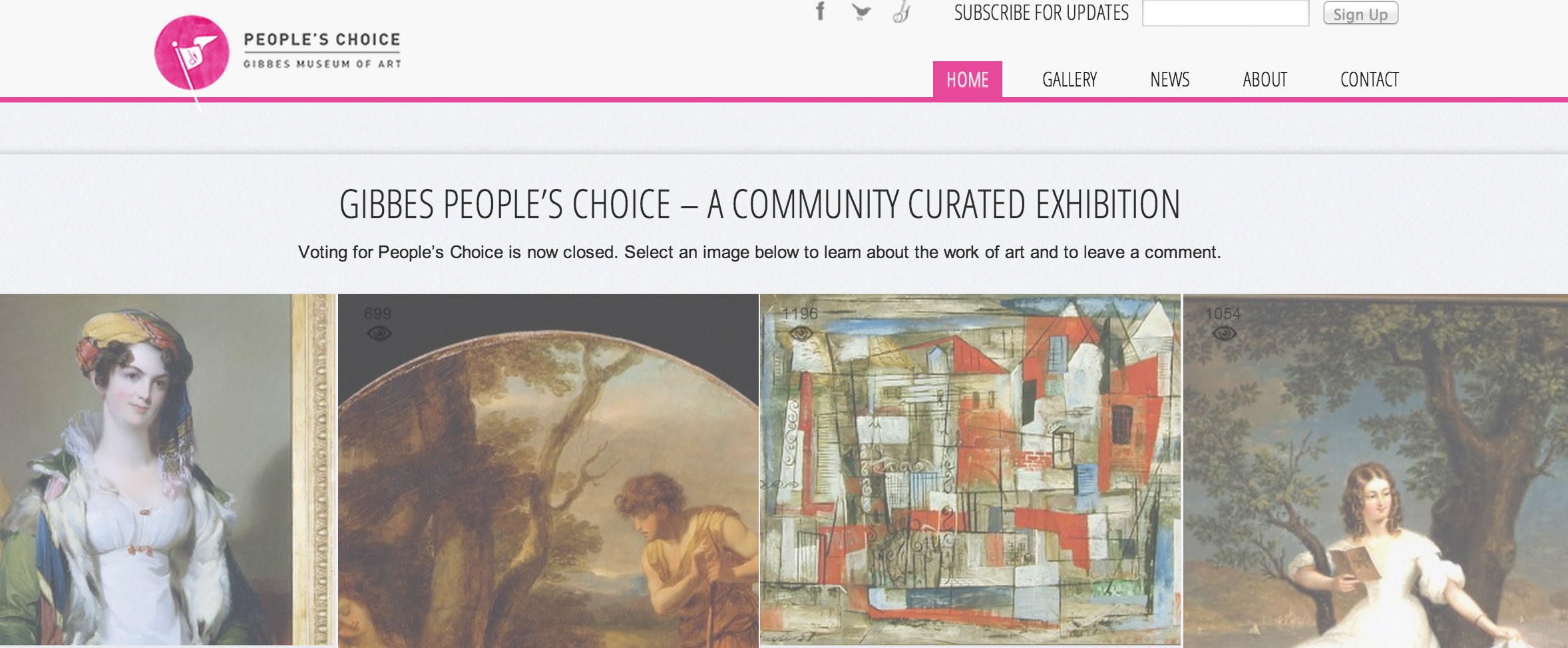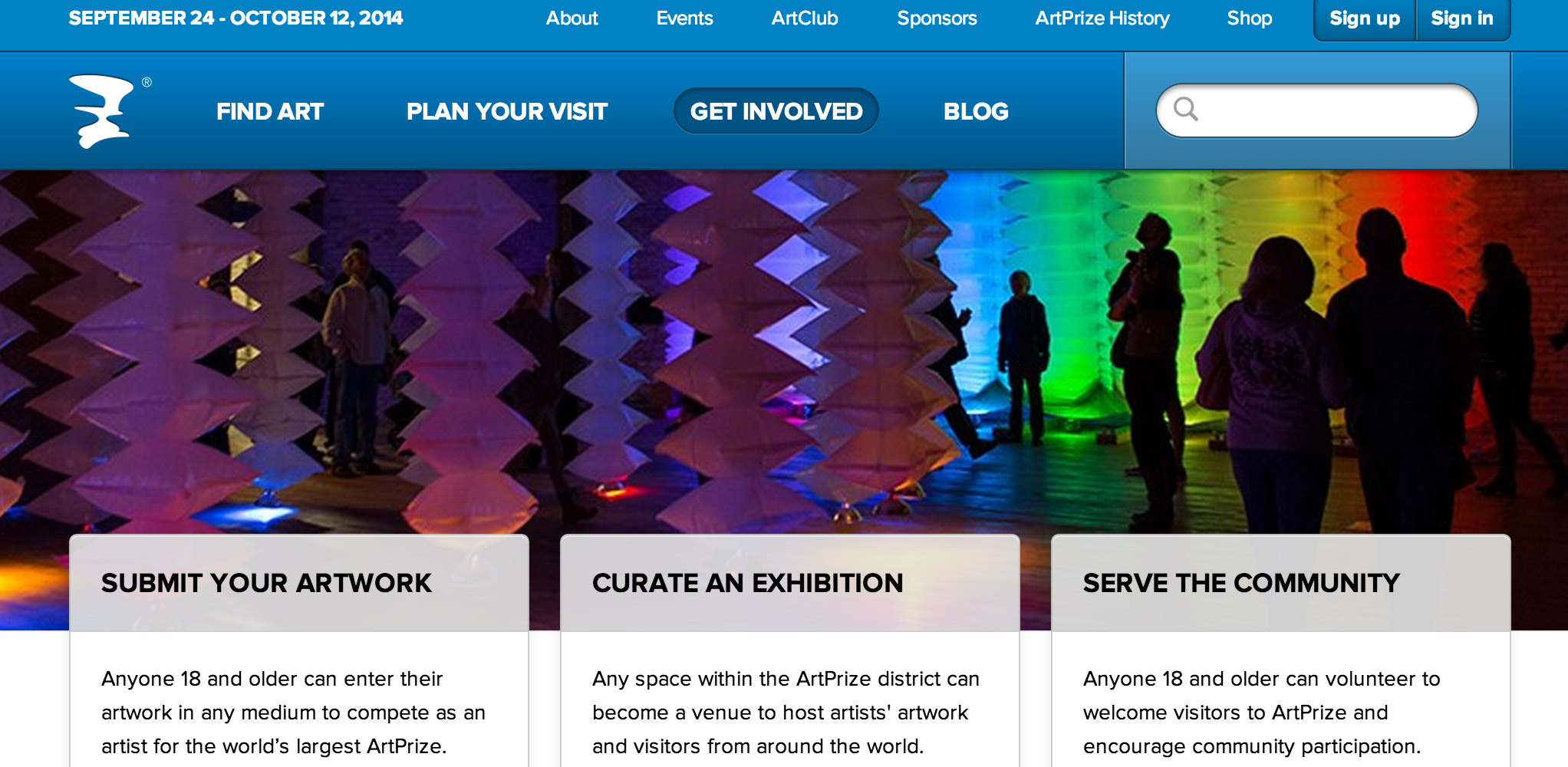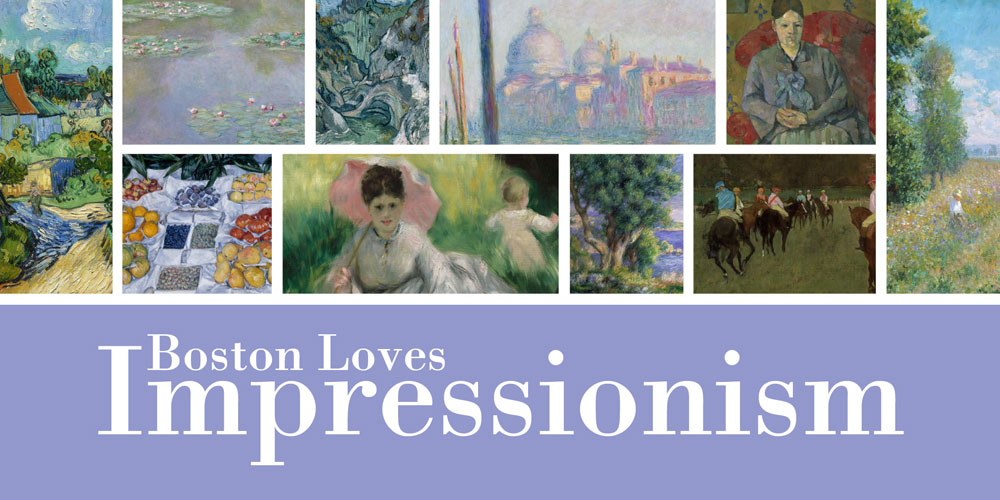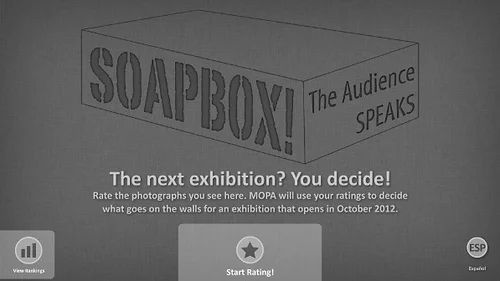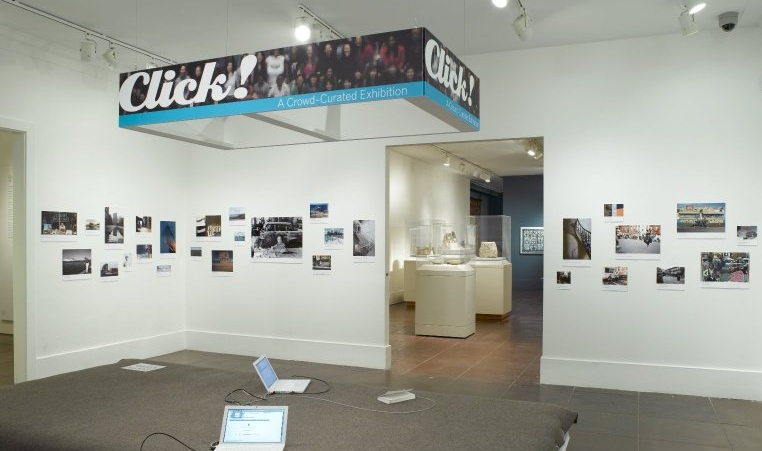In recent years, crowdsourcing has become an increasingly familiar concept implemented by multiple arts organizations to develop and engage audiences. Examples include “Click! A Crowd sourced Exhibition” (Brooklyn Museum, 2008), “Soapbox!” (Museum of Photographic Art, 2013), “Boston Loves Impressionism” (Museum of Fine Art Boston, 2014), and “People's Choice”(Gibbes Museum of Art, 2013).
While crowdsourcing has its critics-a common complaint being that crowdsourcing is a publicity stunt that results in the exhibition of lower quality art-well designed initiatives can successfully facilitate meaningful arts experiences. The rapid development of information technology provides an opportunity for arts organization to harness online technology and social media to launch a crowdsourced exhibition. To do so, it is very important to creatively design every detail of the participatory process. Todd Herring, Director of Communication with ArtPrize, said that during the pre-launch phases of the art competition, organizers wrestled with “the concepts of civic collaboration vs. individual expression, popular opinion vs. singular critique, user experiences vs. user expression.” ArtPrize then took all these aspects into consideration when deciding how to build its website, voting platforms, registration processes, and mobile apps. Since 2009 when ArtPrize was first announced, this unique international art competition has grown with a momentum beyond anyone’s expectation. In 2013, the contest garnered 446,850 votes. Its online presence continues to grow, including a 10% increase in page views, 31% increase of web visitors, 20% increase of Facebook fans, and 35% increase of Twitter followers since 2012.
Over the coming weeks, I will explore how to make the best use of online technologies and social media to launch effective crowd-sourced exhibitions. Two case studies will inform this work: “People’s Choice,” launched by the Gibbes Museum of Art, and ArtPrize’s International Art Competition. In each case, the utilization of online technology and social media will be explored and evaluated based on five phases:
· Pre-launch
· Public nominating/submitting
· Public review and voting
· Announcing and exhibiting
· Post-launch
In the meantime, let us know what crowsourced exhibition you’ve seen or managed. What worked well? What didn’t?


